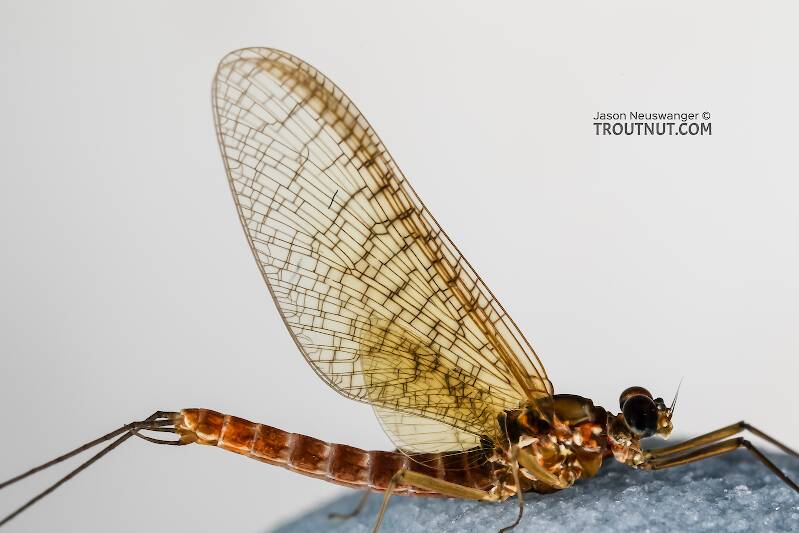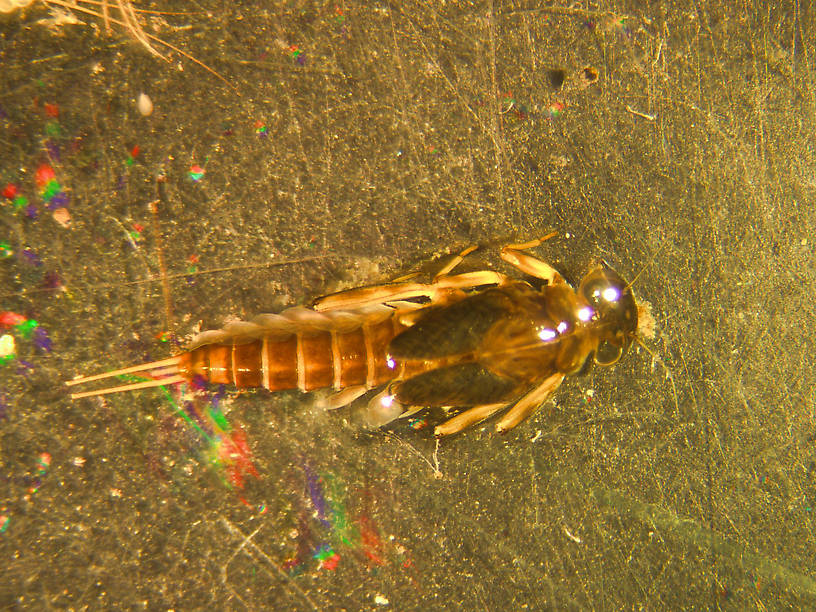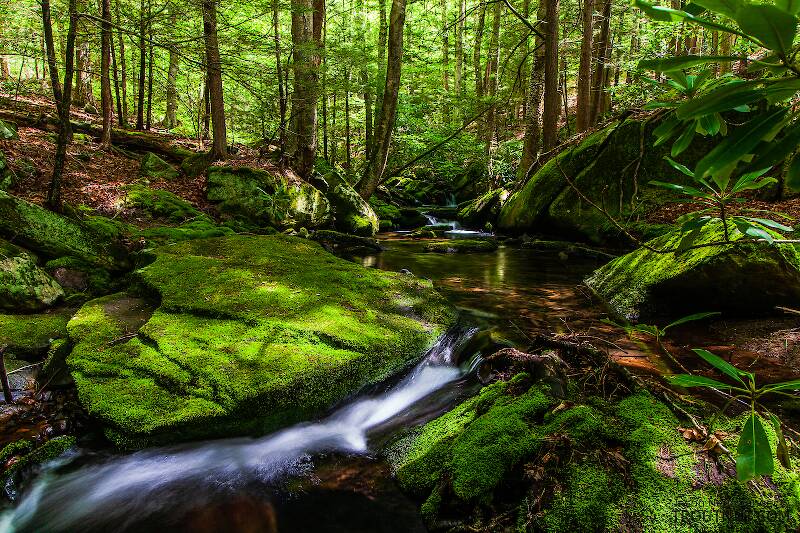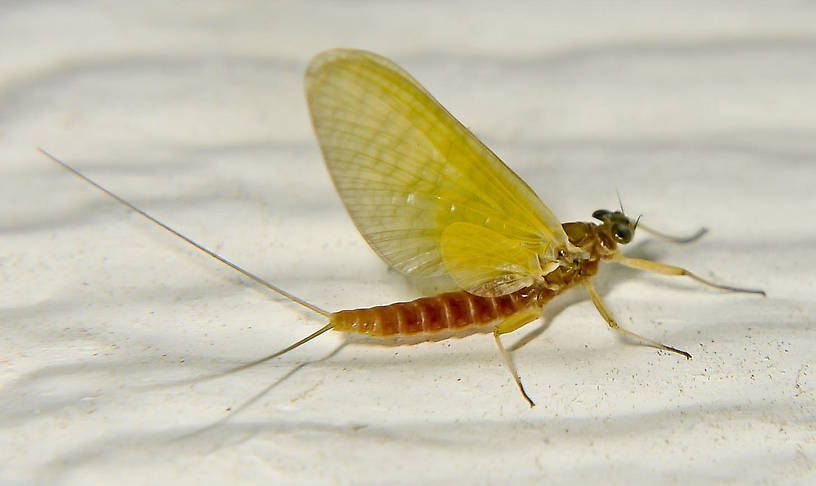
Blue-winged Olives
Baetis
Tiny Baetis mayflies are perhaps the most commonly encountered and imitated by anglers on all American trout streams due to their great abundance, widespread distribution, and trout-friendly emergence habits.


Mayfly Species Cinygmula reticulata (Western Ginger Quills)
Where & when
In 7 records from GBIF, adults of this species have been collected during June (43%), May (29%), April (14%), and July (14%).
In 1 record from GBIF, this species has been collected at elevation of 1700 ft.
Species Range
Hatching behavior
There is scant reporting on this species in angling literature, so behavior that runs the gamut for Heptagenids is possible. Due to the environs where it is most often found, "selective" feeding is rarely at issue.Nymph biology
Current speed: Slow to medium
Substrate: Gravel to small cobble.
Physical description
Most physical descriptions on Troutnut are direct or slightly edited quotes from the original scientific sources describing or updating the species, although there may be errors in copying them to this website. Such descriptions aren't always definitive, because species often turn out to be more variable than the original describers observed. In some cases, only a single specimen was described! However, they are useful starting points.
Male Spinner
Wing length: 9 mm
Very similar to Cinygmula mimus, differing principally in the maculation of the wings. Head and thorax brown, the latter with the usual lighter brown shading in the region anterior to scutellum and with the pleura streaked with light ochreous; a faint ruddy patch anterior to base of forewing. Abdomen dorsally with the anterior half of segments II-VII hyaline, the posterior halt irregularly, purple-brown (deeper in color than in mimus), segments VIII-X opaque, largely purple-brown, with lighter brown shades along lateral edges, and also on posterior margin of X. Ventrally with much the same coloration, but considerably paler, genital plate light ochre-brown; traces of ganglionic marks. Forceps and setae light smoky. Legs pale brown, the femora with faint ruddy tinges. Wings entirely suffused with pale amber, veins and crossveins brown, the latter broadly but rather faintly bordered with pale smoky, giving a very characteristic checkered appearance to the entire wings, a feature not at all present in mimus. The male genitalia are so very similar to those of mimus that no definite character for separation can be given, unless it be that the stimuli are somewhat larger.
Female Spinner
Wing length: 9 mm
Female. Quite similar to male but crossveins on wings less distinctly bordered with smoky. Head rather light ochre-brown, slightly reticulate with smoky and with a darker shading posterior to the mid-ocellus.
Specimens of the Mayfly Species Cinygmula reticulata
1 Female Dun
1 Male Spinner

Keys in Needham's 1935 Biology of Mayflies point to either Cinygmula reticulata or Cinygmula gartrelli. It seems to have crossveins in costal half of forewing only, slightly margined with brown and wings tinged with amber at base and along costal margin of both wing (gartrelli) as opposed to all crossveins of both wings faintly but broadly margined with pale smoky and wings entirely amber-tinged (although there is a slight amber tinge throughout, just more pronounced in places) as in reticulata. However, wing length reported for reticulata (9 mm) is closer to this specimen than gartrelli (10 mm). Ventral median marks are supposed to be "traces" for reticulata and "present" for gartrelli. Descriptions for both species involve semi-hyaline anterior abdominal segments not present on my specimens. Distribution records suggest reticulata lives nearby, so I'm going with that, but I can't confidently rule out gartrelli.
1 Nymph

Start a Discussion of Cinygmula reticulata
References
- Arbona, Fred Jr. 1989. Mayflies, the Angler, and the Trout. Nick Lyons Books.
- Caucci, Al and Nastasi, Bob. 2004. Hatches II. The Lyons Press.
- Knopp, Malcolm and Robert Cormier. 1997. Mayflies: An Angler's Study of Trout Water Ephemeroptera . The Lyons Press.
- McDunnough, J. 1934. New species of North American Ephemeroptera IV. Canadian Entomologist 66: 154-164.
Mayfly Species Cinygmula reticulata (Western Ginger Quills)
Species Range
Common Names
Resources
- NatureServe
- Integrated Taxonomic Information System
- Global Biodiversity Information Facility
- Described by McDunnough (1934)


